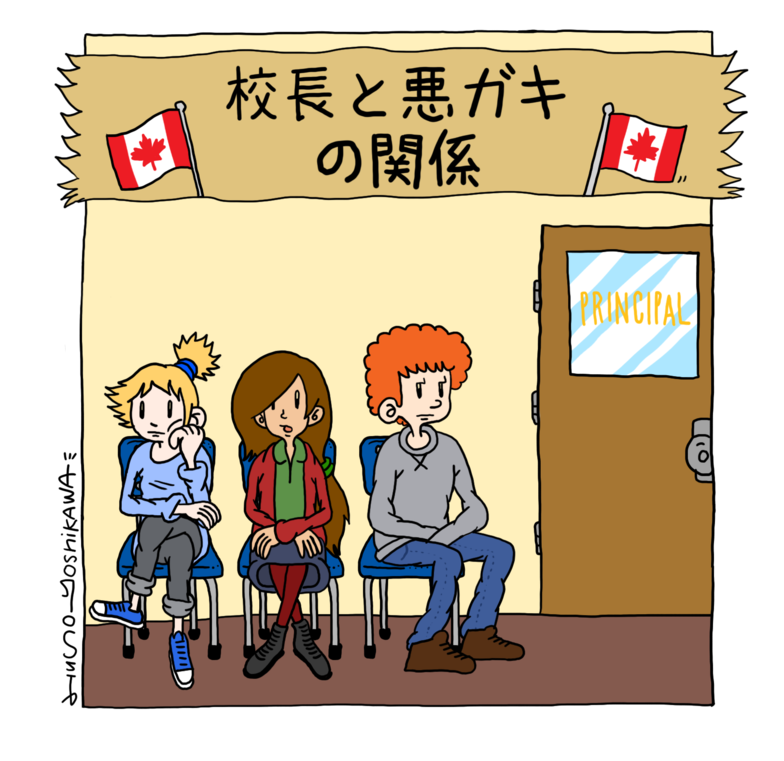A few days after transferring to a Canadian middle/high school, it was Friday afternoon and everyone's motivation was low. Suddenly, three students in the back row started banging their desks like drums and singing. They were clearly already in weekend mode. Seeing this, the teacher gave a "not again" look and pressed the intercom button on the wall. When a "Yes?" came from the other side, the teacher simply stated, "I'm sending ○○, △△, and ×× over there right now!" Then, shouting at the trio, "○○, △△, ×× principal's office now!" The three reluctantly got up and headed for the principal's office.
Hmm, I see. Here in Canada, teachers issue warnings but don't resolve issues with students themselves. When problems arise, they send the troublemakers to the principal's office, where the principal takes on the role of resolving the issue. Later, I witnessed chairs lined up outside the principal's office, with many misbehaving students waiting their turn to be called in. It was quite an unusual sight, especially from a Japanese perspective.
Unfortunately, I never went to the principal's office myself, but apparently, discussions take place there, and punishments like "detention" are handed down. If the issue is difficult to resolve, it seems the parents are called in. Because of this, even if a class gets out of hand, the instigator is immediately removed from the classroom, so the lesson doesn't stop. The other students can continue learning and don't tend to see the incident as particularly relevant to themselves.
The expelled student, for their part, must face the principal, a higher authority, and thus doesn't harbor much personal anger toward the teacher. Parents are contacted immediately and informed. This system means the principal knows many students well, and knows the "regulars in the principal's office" – the troublemakers – even better than the top students. It's a system that steadily builds expertise in "discipline."

This approach was very surprising to me. Back in Japanese elementary school, no matter how much I rebelled or misbehaved, teachers never told my parents. Instead, they always found something positive to praise me for in front of them. What parents overseas might call "bad behavior" was often described in Japan as "very energetic" and praised. And when problems arose, the teacher would stop the class lesson to stop the defiance and try to resolve it. Even in Japanese junior high schools, while you might hear the principal speak at assemblies, I rarely got the impression they spoke one-on-one with students.
Thinking about this, I realized there are many ways not just to "teach," but also to "scold." How to scold, and how much of that content to share publicly, might also be important. When someone does something wrong, should they be made to reflect by receiving concrete "punishments" like detention, suspension, or expulsion imposed by an authority figure? Or do you appeal to their conscience with abstract statements like "this causes trouble for everyone"? Whether it's done in front of the class or privately might also affect their relationship with the class afterward. Do you involve the parents, or not? Whether parents side with the teacher or the student also significantly impacts the student's attitude afterward. Amidst the talk of "monster parents" and "group bullying," I find it interesting to reconsider the act of "scolding."




